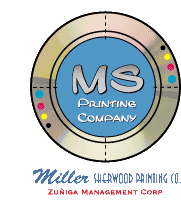Ten Tips to Improve Your Type
1. One space between sentences. Use only one space after periods, colons, exclamation points, question marks, quotation marks -- any punctuation that separates sentences or thoughts. If you're using two spaces, chances are you learned to type on a typewriter using monospaced type, where two spaces were needed to separate sentences properly. No more; you're using proportionally spaced fonts on a computer now.
2. Periods and commas are always placed inside the quotation marks. Like "this," never like "this". Colons and semicolons go outside the quotation marks. Question marks and exclamation points go in or out, depending on whether thy belong to the material inside the quote or not. Logically, if they belong to the quoted material, they go inside the quote marks, and vice versa.
3. "Its" used as a possessive never has an apostrophe! With an apostrophe, "it's" is a contraction meaning "it is" or "it has." Always. Think of the possessives yours, hers, and his -- they don't use apostrophes so neither should its.
4. Don't underline. Underlining is for typewriters; italic is for professional text. If you are wishing to emphasize a word or two and it's not a book title, you can also use bold type, larger type, or a different font.
5. Very rarely (almost never) use all capital letters. All caps are much harder to read. We recognize words not only by their letter groups, but by their shapes. When words are in all caps, you can't tell their shapes apart.
6. Never use the space bar to align text. If you want things to align, you must use tabs. (Exception: avoid the use of tabs in e-mail; if you're using a monospaced font, which is usually recommended, use spaces to align your text.)
7. Avoid more than two hyphenations in a row. Avoid too many hyphenations in any paragraph. Avoid stupid hyphenations. Never hyphenate a word in a heading. Break lines sensibly.
8. Serif type is more readable and is best for text. Sans serif type is more legible and is best used for headlines. Examples of serif type: Times New Roman, New Century Schoolbook; examples of sans serif (without serifs) type: Arial, Helvetica, Swiss.
9. Never combine more than two typefaces on the same page (unless you have a background in design and typography and know what you're doing!). Never combine two serif fonts on the same page, and never combine two sans serif fonts on the same page.
10. Use italic and bold sparingly. Use them as you would a rich dessert -- they're fine occasionally, but easy to overdose on.



